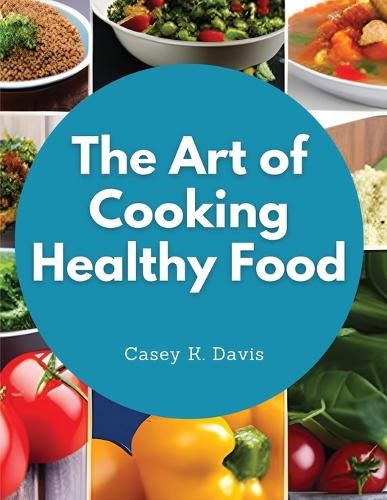Readings Newsletter
Become a Readings Member to make your shopping experience even easier.
Sign in or sign up for free!
You’re not far away from qualifying for FREE standard shipping within Australia
You’ve qualified for FREE standard shipping within Australia
The cart is loading…






This title is printed to order. This book may have been self-published. If so, we cannot guarantee the quality of the content. In the main most books will have gone through the editing process however some may not. We therefore suggest that you be aware of this before ordering this book. If in doubt check either the author or publisher’s details as we are unable to accept any returns unless they are faulty. Please contact us if you have any questions.
Salads are divided into two groups, dinner salads and the more substantial ones served at supper and luncheon in the place of meats. They are exceedingly wholesome. Nearly all the meats, vegetables, and fruits may be served as salads.
The essential thing is to have the salad fresh and cold; and if green, to have the leaves crisp and dry. Lettuce, Romaine, endive and chicory or escarole make the best dinner salads, although one may use mixed cooked vegetables or well-prepared uncooked cabbage.
Left-over green vegetables, string beans, peas, carrots, turnips, cauliflower, cooked spinach, leeks and beets may all take their place in the dinner salad. Use them mixed, alone, or as a garnish for lettuce. Lettuce and all green, raw salad vegetables should be washed and soaked in cold water as soon as they come from the market. After they have stood fifteen to twenty minutes in cold or ice water, free them from moisture by swinging them in a wire basket, or dry, without bruising, each leaf carefully with a napkin. Put them in a cheese-cloth bag and on the ice, ready for service.
In this way they will remain dry and cold, and will keep nicely for a week. The dressing is added only at the moment of serving, as the salad wilts if allowed to stand after the dressing is added. Meat of any kind used for salads should be cut into dice, but not smaller than one-half inch, or it will seem like hash.
It should be marinated before being mixed with the other parts of the salad. Meat mixtures are usually piled in cone-shape on a dish, the mayonnaise then spread over it, and garnished with lettuce, capers, hard-boiled eggs, gherkins, etc.
$9.00 standard shipping within Australia
FREE standard shipping within Australia for orders over $100.00
Express & International shipping calculated at checkout
This title is printed to order. This book may have been self-published. If so, we cannot guarantee the quality of the content. In the main most books will have gone through the editing process however some may not. We therefore suggest that you be aware of this before ordering this book. If in doubt check either the author or publisher’s details as we are unable to accept any returns unless they are faulty. Please contact us if you have any questions.
Salads are divided into two groups, dinner salads and the more substantial ones served at supper and luncheon in the place of meats. They are exceedingly wholesome. Nearly all the meats, vegetables, and fruits may be served as salads.
The essential thing is to have the salad fresh and cold; and if green, to have the leaves crisp and dry. Lettuce, Romaine, endive and chicory or escarole make the best dinner salads, although one may use mixed cooked vegetables or well-prepared uncooked cabbage.
Left-over green vegetables, string beans, peas, carrots, turnips, cauliflower, cooked spinach, leeks and beets may all take their place in the dinner salad. Use them mixed, alone, or as a garnish for lettuce. Lettuce and all green, raw salad vegetables should be washed and soaked in cold water as soon as they come from the market. After they have stood fifteen to twenty minutes in cold or ice water, free them from moisture by swinging them in a wire basket, or dry, without bruising, each leaf carefully with a napkin. Put them in a cheese-cloth bag and on the ice, ready for service.
In this way they will remain dry and cold, and will keep nicely for a week. The dressing is added only at the moment of serving, as the salad wilts if allowed to stand after the dressing is added. Meat of any kind used for salads should be cut into dice, but not smaller than one-half inch, or it will seem like hash.
It should be marinated before being mixed with the other parts of the salad. Meat mixtures are usually piled in cone-shape on a dish, the mayonnaise then spread over it, and garnished with lettuce, capers, hard-boiled eggs, gherkins, etc.